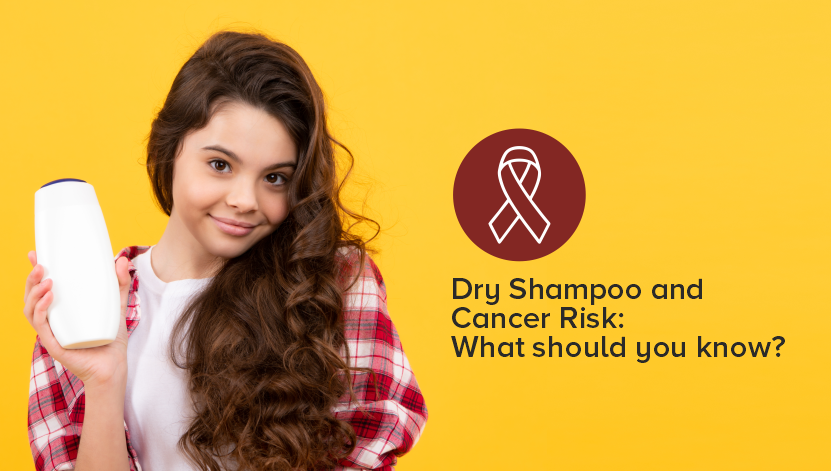In the whirlwind of our busy lives, dry shampoo has emerged as a beacon of hope, a savior from the tyranny of a grease-laden mane and lengthy morning routines. However, like any modern convenience, its glimmer can dim under the scrutiny of health claims and safety concerns. One such concern that has surfaced is the potential link between dry shampoo usage and cancer risk. But before you grab a bottle or chuck it out, it's crucial to sift through the information and uncover the truth.

Dry shampoo is a product designed to freshen your hair and reduce grease without using water. It typically comes in powder or aerosol spray form and absorbs excess oils to give the appearance of a clean scalp. With its convenience and immediate results, dry shampoo has garnered a broad following among people of all ages, genders, and hair types.
Social media and internet forums have been buzzing with fears over the safety of dry shampoo. Several viral posts and news articles have suggested that the ingredients in dry shampoo could be linked to cancer when they come into contact with the skin and scalp. But is there substantial evidence to support these alarming claims?
The most common active ingredients in dry shampoo are talc, rice starch, and various chemicals such as aerosol propellants, aromatic compounds, and absorbents like silica or cornstarch. The discourse around cancer risk primarily revolves around talc, which has been at the center of numerous legal battles regarding its connections to ovarian cancer.
Studies on the link between talc and cancer are inconclusive. It's important to note that the use of talc in consumer products is highly regulated, with many manufacturers opting for alternatives in light of the ongoing studies and litigation.
When evaluating the cancer risk of dry shampoo, it's essential to consider individual health factors, such as pre-existing conditions and genetic predispositions. A balanced approach to risk assessment involves looking at your overall lifestyle, including your diet, exercise habits, and exposure to other potential carcinogens.
If you're concerned about your dry shampoo's safety, consider these tips for minimizing potential risks:
Choose Talc-Free Varieties: Many dry shampoos now advertise a 'talc-free' formula, which could offer peace of mind.
Moderation is Key: The principle of 'everything in moderation' applies here. Using dry shampoo as an occasional touch-up rather than a daily substitute for washing may reduce any potential risk.
Proper Application: Ensure that you're using the product correctly, applying it to the roots without letting it come into direct contact with the scalp for an extended period.
For those looking to decrease their reliance on dry shampoo, there are alternative methods to extend the time between washes:
Hair Protection Practices: Nighttime braids, silk pillowcases, and regular brushing can help distribute natural oils and prevent hair from getting greasy quickly.
Cornstarch and Oatmeal Solutions: Some DIY enthusiasts recommend using cornstarch or oatmeal as natural, safer alternatives to commercial dry shampoo products.
As a consumer, navigating health claims in the beauty industry can be daunting. The dry shampoo debate highlights the need for transparency in product labeling and a consumer's right to access informative, non-alarmist data about the products they use.
Arm yourself with knowledge by:
Reading Labels: Understanding the ingredients in your dry shampoo can help you make an informed choice.
Consulting Reliable Sources: Look beyond headlines and seek information from scientific studies, health organizations, and trusted experts.
The jury is still out on whether dry shampoo poses a significant cancer risk. While some ingredients, such as talc, are under scrutiny, current evidence does not conclusively support the idea that occasional use of dry shampoo is harmful. It's a product that, used responsibly, can offer incredible convenience and a solution to common hair woes.
Awareness of potential health risks is vital for making informed choices, but it's equally important not to succumb to fear-mongering. Sensationalized headlines and social media scares can cause unnecessary panic. Instead, we should foster a culture of evidence-based inquiry, where information is presented in a balanced and academically honest way.
Dry shampoo stands at the intersection of convenience, beauty, and health. Like many modern products, it's part of a complex narrative where science intersects with consumer wellness. In light of the dry shampoo cancer risk discussion, the emphasis should be on understanding the nuances of available data, considering individual health needs, and promoting sensible, informed usage. Through this lens, we can continue to enjoy the benefits of dry shampoo, confident in our decision-making. For comprehensive skin cancer treatment in India, American Oncology Institute stands out as the premier multi-disciplinary oncology hospital known for excellence in care.